 As I wrote and published my 2011 series of posts about the uproar surrounding the disclosure that Bob Dylan based a series of paintings on photographs, I knew that those commentaries of mine ― indeed, every commentary I read on this tempest in a teapot ― left an important question not just unanswered but unexplored. To wit: What happens when the shoe is on the other foot ― when a photographer bases his or her images on paintings?
As I wrote and published my 2011 series of posts about the uproar surrounding the disclosure that Bob Dylan based a series of paintings on photographs, I knew that those commentaries of mine ― indeed, every commentary I read on this tempest in a teapot ― left an important question not just unanswered but unexplored. To wit: What happens when the shoe is on the other foot ― when a photographer bases his or her images on paintings?
At the time, in the first of those posts, I did ask, “[B]y the same token, in what ways are photographers allowed to respond to works of graphic art — and, conversely, disallowed from responding to them — both legally and ethically?” And I concluded the last of that series as follows: “[T]his situation provides an occasion to contemplate a complex of issues that’s in no way resolved at present: the legal and ethical questions that arise when painters and other graphic artists respond to photographs and photographers respond to works of visual art in other media.” But that’s where I left it. (For the record, so long as the legal IP rights of the makers of such photographs and graphic works do not get violated, I have no ethical or critical position on these practices in either direction.)
Other subjects have preoccupied me since I wrote those 2011 posts, but this one has lurked in draft form and beckoned periodically. Stuck in the midst of summer doldrums a month ago, lying low during a New York heat wave, it foregrounded itself as unfinished business. So here goes.
Backstory
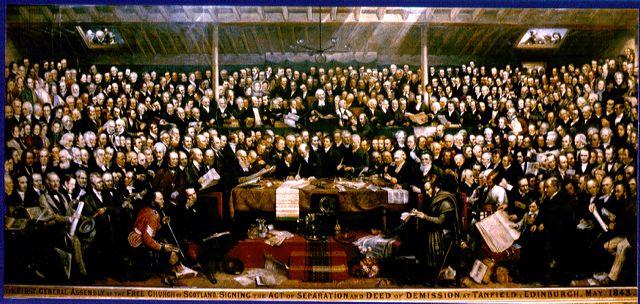
David Octavius Hill, “The First General Assembly of the Free Church of Scotland, Edinburgh, May 1843,” oil painting, 1866.
As I pointed out at the time, you have to be grossly and willfully ignorant of the history of art post-1839 to wax indignant over any painter’s use of photographs as source material. Painting from photographs has a long history in artistic practice. David Octavius Hill and Robert Adamson made their famous photographic portraits as sketches toward a painting, as did many 19th-century portrait painters subsequently. Eugène Atget marketed his inventory of prints as “photographs for artists,” which suggests that at least some of them served as reference points for works by graphic artists, and that purchase of one of his prints included the license to make a painted version.
In the 20th century, artists as different as Charles Sheeler, Norman Rockwell, and Ben Shahn ― among many others ― painted from photographs (photos which, in those three cases, they mostly made themselves). More recently, Gerhard Richter used news photos of the Baader-Meinhof gang as the basis for a famous series of works, and Eric Fischl has acknowledged that he bases his portraits on photographs. David Salle has worked from photographs he made; Robert Longo’s “Men in the Cities” series of drawings resulted from projections of his own photos. Until the advent of Pop Art in the 1950s, working from photographs wasn’t something a painter admitted to except under duress, but as a practice it constituted an open secret. With Warhol, Rivers, Rauschenberg, and others of that generation it became undeniable, frequently acknowledged freely, and, in fact, a point of pride. Today it’s a commonplace.
Enter Dylan the Painter
To recap the brouhaha briefly, in the fall of 2011 Dylan showed his “Asia Series,” a group of paintings, at the Gagosian Gallery in New York. The inevitable investigation by Dylanologists soon revealed that he’d based many of these on historical and contemporary photographs, rights to which he’d licensed for that purpose.
One good reason for Dylan and his gallery not disclosing this upfront we can see in what ensued from that revelation: Instead of attention getting paid to the paintings themselves, for better or worse, a debate (much of it specious and uninformed) exploded around that particular working method. Given the scrutiny he’s under, I think Dylan was foolish to think he could avoid that, but I can empathize with the impulse to attempt to get around it, even if only momentarily, in order to find out what people thought about the paintings themselves.
Another good reason might be that the professional field in which Dylan has worked all of his life, music, has established clear guidelines for licensing performance and recording rights to the work of others, as well as for legally “sampling” elements of such intellectual property. When John Coltrane played the melody of “My Favorite Things” by Rodgers and Hammerstein, and then improvised thereon, in live performance, and subsequently recorded it, he worked within a system that had established fees for those different usages.
The art and photography industries, by contrast, haven’t clarified the licensing procedures with anything like the precision of the music industry. Much confusion might evaporate, and disputes like this never arise, if the licensing of visual imagery used the licensing of music to refine its model.
But Dylan did in fact show his respect for the IP of others by licensing his usage of them. Are these paintings “derivative works” in relation to those photos? By definition, his payments of licensing fees to Magnum Photos and others who hold rights for the ones still under copyright protection make them such, legally speaking. Since Dylan didn’t reproduce the photographic images themselves, the payment has to apply to what the copyright law defines as works derived from them. Dylan has replicated their iconography, to be sure, rendering them in painted interpretations, and scrupulously paid for the right to do just that.
Doing so in formal fashion, with negotiated compensation to the originator, whether declared or not, doesn’t normally subject the licenser to charges of plagiarism, theft, cheating, or other malfeasance. So ― keeping in mind that photographers have made millions of dollars by licensing rights to photographs of Bob Dylan made without his express permission ― I find myself bemused by the vocabulary writers deployed to describe Dylan’s method.
![]() Ann Binlot’s article at ArtInfo has “rip off” in its headline and “close copies” in its text. Richard Polsky, at The Huffington Post, uses the word “steal,” asserting that “these pictures may not be on the up and up” and “Dylan’s pictures reproduce the photos verbatim. This is not what the art experience is supposed to be about.” Mallika Rao’s story, also at HuffPost, has “Plagiarized” in its headline, while her text runneth over with condemnation: “straight out copied photographs,” “blatant examples of line-for-line mimicry,” “Dylan’s shamelessness,” “Bob Dylan: The Paint By Numbers Edition,” “photo-to-painting intellectual theft.”
Ann Binlot’s article at ArtInfo has “rip off” in its headline and “close copies” in its text. Richard Polsky, at The Huffington Post, uses the word “steal,” asserting that “these pictures may not be on the up and up” and “Dylan’s pictures reproduce the photos verbatim. This is not what the art experience is supposed to be about.” Mallika Rao’s story, also at HuffPost, has “Plagiarized” in its headline, while her text runneth over with condemnation: “straight out copied photographs,” “blatant examples of line-for-line mimicry,” “Dylan’s shamelessness,” “Bob Dylan: The Paint By Numbers Edition,” “photo-to-painting intellectual theft.”
 The art world, and the history of art since 1839, answers the question of whether it’s creatively legitimate to make paintings and graphic works based on photographs with a resounding, unequivocal “Yes!” To be sure, you could find some informed and level-headed counterpoint to this rabid blather: Blake Gopnik, sensible and cogent at The Daily Beast; Holland Cotter in serious art-critic mode at the New York Times; Dave Itzkoff in even-handed reportorial mode, also at the Times; and Dylanologist Scott Warmuth at his own blog, Goon Talk. But a feverish hysteria dominated the debate, most coming from sources who know little or nothing about contemporary art practice. As Susan Sontag once wrote, “To be scandalized by the normal is always demagogic.”
The art world, and the history of art since 1839, answers the question of whether it’s creatively legitimate to make paintings and graphic works based on photographs with a resounding, unequivocal “Yes!” To be sure, you could find some informed and level-headed counterpoint to this rabid blather: Blake Gopnik, sensible and cogent at The Daily Beast; Holland Cotter in serious art-critic mode at the New York Times; Dave Itzkoff in even-handed reportorial mode, also at the Times; and Dylanologist Scott Warmuth at his own blog, Goon Talk. But a feverish hysteria dominated the debate, most coming from sources who know little or nothing about contemporary art practice. As Susan Sontag once wrote, “To be scandalized by the normal is always demagogic.”
I dealt with this over-the-topness from ignorami in my original posts. I provide these examples here as evidence of the one-sided nature of this discussion ― one-sided in that it deals only with the relationship of painters to photographs, without the commentators ever considering the reverse situation. If it’s acceptable (or not) for painters to work from photographs, and to replicate closely or paraphrase broadly the iconography of photos, do photographers get to do (or not do) the same with paintings? And, if they do, why do all the complaints about image appropriation seem to come from the photography side of the spectrum?
No, I’m not going to go all Lawrence Lessig on your ass, arguing that everyone has the right to “remix” everything else, copyright be damned. Readers of this blog and my other writings know that I defend ferociously my own intellectual property and the IP rights of others. But what’s sauce for the goose is definitely sauce for the gander. There’s a double standard operative when photographers cry foul over appropriation of their images by artists, and we need to address it.
I’ll get to some specific instances in my next post.
•
Note: A selection of a dozen pastel portraits by Dylan are on view for the first time at the National Portrait Gallery in London, in a show that opened in late August under the title “Face Value.” Supposedly some of the subjects are real, some fictional, and all the images are “amalgamations.” Done from life, from photos, from memory, from imagination? Let the wild search for sources begin!
For a short video that gives you a glimpse of the images, click here. For a sampling of ur-Britsnark by Mark Hudson, a music reviewer for the London Telegraph who doesn’t seem to know fuck-all about art, click here. Zoe Pilger, at The Independent, takes these works seriously. If you find yourself in London between now and January 5, you can see them for yourself, and form your own opinion.
•
For an index of links to all posts related to this story, click here.
•
This post supported by a donation from Norbert Kleber.


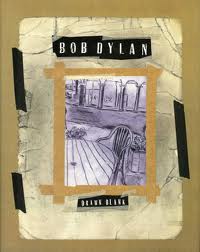
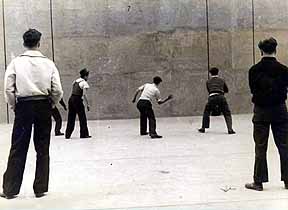
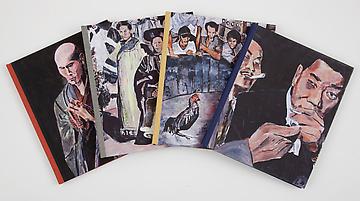
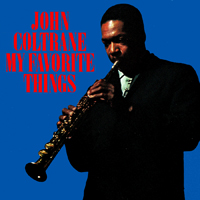
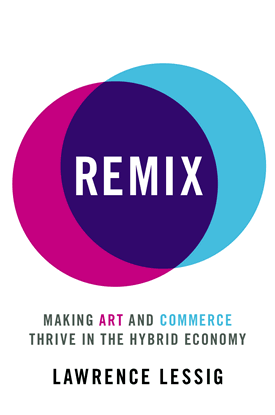




Mr. Coleman,
Always nice to see a Coltrane album. If for nothing else than nostalgia. On this topic, Dylan’s “Farewell” is an adaptation of an, I believe, British, folk song. It is impossible to be an artist and not appropriate, often unintentionally. Dylan might have been on shaky ground by keeping his a secret. But this flap is mostly from people with little better to do.
Best,
Chuck